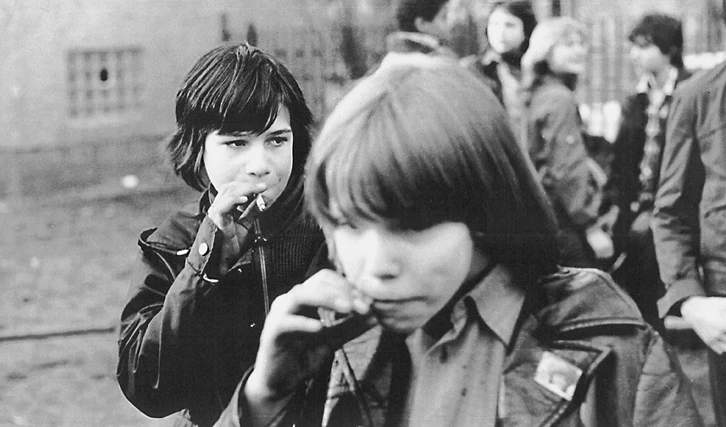The Story So Far:
In the captivating world of cinema, where time is sealed within frames and history unfolds as material, Thomas Heise’s works shine a light on the ever-evolving space of documentary filmmaking. His film “Heimat ist ein Raum aus Zeit” (2019) delves into the intricacies of time, inviting viewers to navigate through a cinematic realm crafted from text and duration. This three-and-a-half-hour masterpiece intricately weaves together long shots of historical documents, including those from the NS era, with Heise’s poignant narration. The film, a testament to the power of imagery, stands as a testament to the artistry of filmmaking.
Die Zeit als Material:
“Heimat ist ein Raum aus Zeit” is just one of the many works that prompt contemplation on the relationship between documentary filmmaking and time. Heise’s entire body of work revolves around documenting contemporary history, showcasing the modulation of time in documentaries as a means of exploring reality. From real-time recordings to slow cinema, the manipulation of time in documentaries serves as a tool for understanding the world around us, as highlighted by Michelle Koch. The negotiation between filmic time and real time is a unique aspect of documentary filmmaking, where the aesthetic representation is deeply intertwined with the production process.
Queer, not Straight:
Natascha Frankenberg’s exploration of queerness in documentary films sheds light on the multifaceted nature of time in cinematic storytelling. Queerness transcends mere identity and desire, evolving into an activist and artistic strategy that challenges normative concepts of time. By employing queer strategies, films can critique conventional notions of time, paving the way for a more inclusive and diverse representation of history. As Frankenberg elucidates, queer temporalities offer a fresh perspective on storytelling, emphasizing the importance of non-linear narratives in capturing the essence of diverse experiences.
Brüche, Risse, Wiederholungen:
Drawing inspiration from the likes of Heiner Müller, Thomas Heise’s cinematic endeavors unfold as a tribute to the complexities of history and time. Müller’s vision of history, marked by contradictions, fractures, and repetitions, finds resonance in Heise’s artistic practice. By allowing images to speak for themselves, Heise crafts a narrative that transcends conventional storytelling, offering a visceral experience of history. His film “Material” stands as a testament to his commitment to freeing history from factual constraints, presenting a raw and unfiltered portrayal of the past.
Conclusion:
In the realm of documentary filmmaking, Thomas Heise’s work stands as a testament to the power of storytelling through images and time. His films, imbued with melancholic undertones and profound reflections on history, invite viewers to ponder the intricacies of our collective past. As we navigate through the ever-changing landscape of cinema, Heise’s legacy continues to inspire a new generation of filmmakers to embrace the complexities of time and history in their craft.
Frequently Asked Questions:
1. How does Thomas Heise’s film “Heimat ist ein Raum aus Zeit” redefine documentary storytelling?
2. What role does queerness play in reshaping temporalities in documentary films?
3. How does Thomas Heise’s work resonate with Heiner Müller’s concept of history?
4. What makes Thomas Heise’s approach to filmmaking unique in capturing the essence of time and history?
5. How does “Material” stand out as a pivotal work in Thomas Heise’s filmography?
6. What themes and motifs are prevalent in Thomas Heise’s exploration of time and history?
7. How does Heise’s use of imagery create a profound impact on the audience’s perception of history?
8. What significance does the negotiation between filmic time and real time hold in documentary filmmaking?
9. How does Thomas Heise’s cinematic legacy continue to influence contemporary filmmakers?
10. What can viewers expect from Thomas Heise’s films in terms of storytelling and visual aesthetics?
Tags: Thomas Heise, Documentary Filmmaking, Time, History, Queer Theory, Cinema, Storytelling, Artistry, Legacy, Melancholy.

